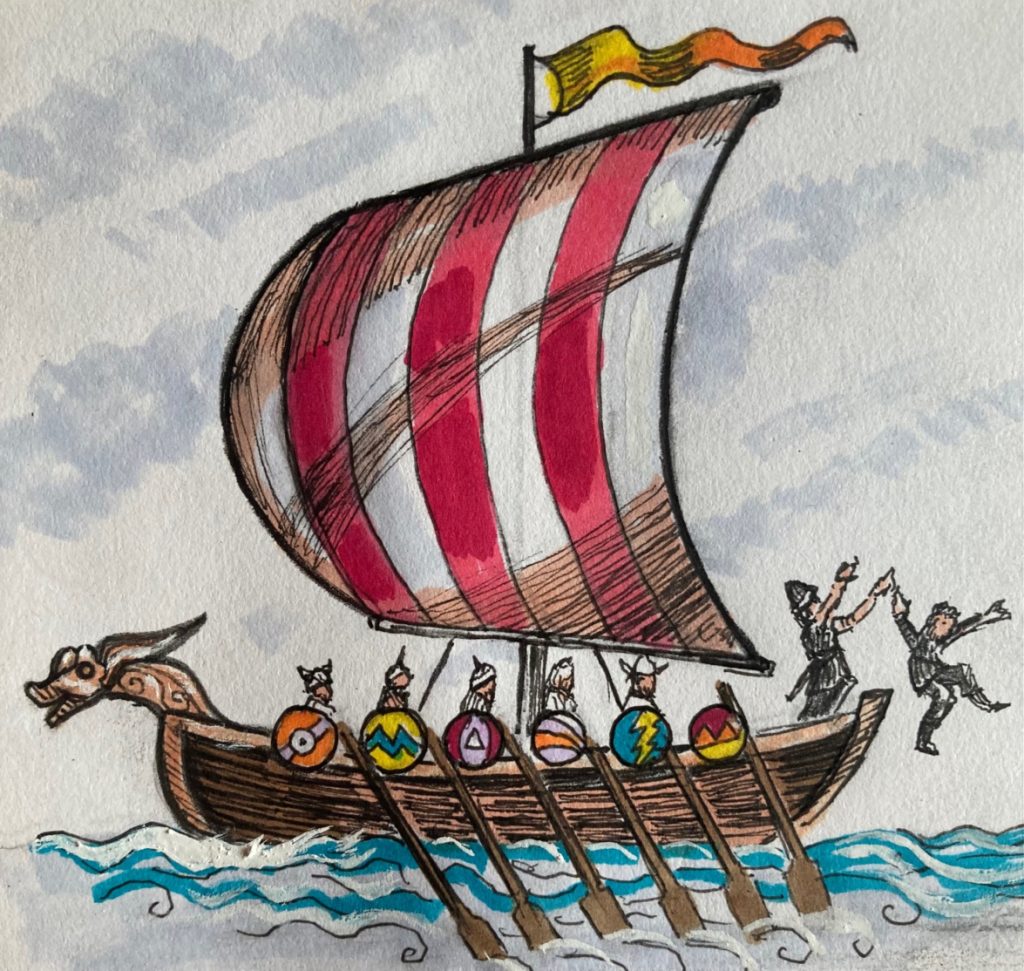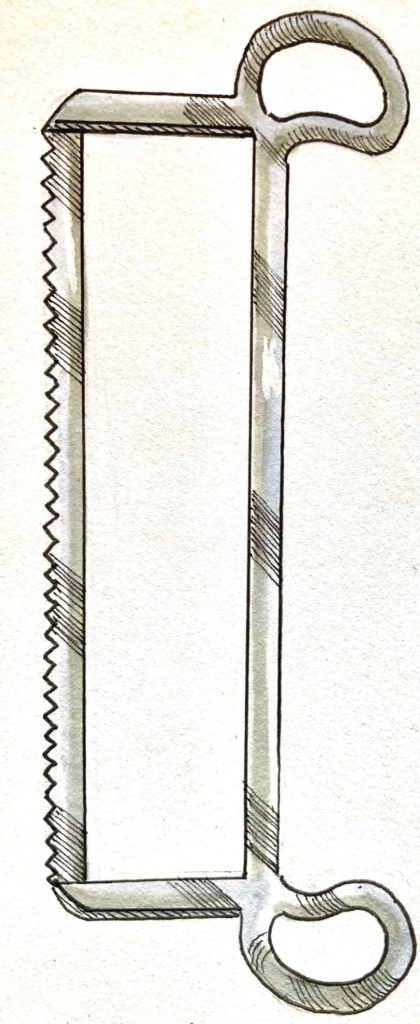In Ancient times, if you became sick on a Roman galley, your medical plan allowed you to be thrown overboard, fortunately without any cost or co-pay to you. The Romans didn’t consider it “Socialism”! Yet here, in the good old USA, this simple effective plan would never be allowed because there isn’t profit in throwing a useless sailor overboard. During the Dark and Middle Ages medicine on ships took a slight upward tick. Aboard roving Viking ships in the 8th and 9th centuries, if a crew member like Erik Ekklesteenson complained to the captain of some ailment, he would be asked to put on his helmet and then the entire crew would pummel his head with their giant war hammers for about three minutes. If he survived and could stutter “Wow! I feel better” he was considered cured. If not, he was deep-sixed into the cold, dreary sea with a prayer to “Odin”. Then his crewmates would all get drunk on mead (A type of beer) like they did every night anyway!

At the time of the Crusades and Pilgrimages to the Holy Land, the European gentry expected more luxury and safety on a voyage. Soon they were bringing fancy furniture aboard, servants, their personal doctor to bleed them with leeches as needed, a priest and if they were really royal, a wizard, and a personal juggler. Of course, the wizard, juggler and priest were your best bets if you got sick. Doctors didn’t know much about hygiene in those days so if they so much as touched you, you’d be overboard in a day or two anyway. Jugglers were very adept with knives and could lance a boil or cut out a kidney with great adeptness. Then the priest would pray for you while the wizard would apply weird goos to ward off infection. They were your safest bet.
Little by little you are beginning to see how medical care improved at sea. By the time of pirates, captains often took the place of doctors and were pretty good at it. They became very adept at removing legs mangled by a cannonball. That’s how Captain Kidd got his name. When he told a crewman “I’m going to cut off what’s left of your arm” the patient would scream out “You’re Kidding me”. Kidd would say “I don’t Kidd, matey!” Then he’d force a gallon of rum down the wounded sailor’s throat, and oops! Arm overboard! The British naval chips that pursued the pirates were slowly becoming better equipped and sophisticated at dealing with medical emergencies. The Admiralty began to add doctors to their ships on the theory that half a sailor was better than always replacing them. You could fight with one hand and a cutlass or fire a flintlock. There were many tasks you could do fairly well with a peg leg. If you lost both legs, you could just roll around the deck peeling potatoes. You could also roll around and sing to entertain the crew on Sundays. Musicologists believe that their singing and rolling around while the ship rocked to the waves is the root of the term “Rock and Roll”. I have to do a trite more checking on that fact.
During the 19th century’s “Great Age of the Sail”, ship doctors were supplied with medical kits that would make a medieval church inquisitor’s head spin with envy. At the center of each kit, which was in a finely varnished wooden box, was a frighteningly shaped stainless steel saw. Obviously, from what you have already read, this got the most use. Then there were all types of scary clippers. Ear hurts? Clip it off! Runny nose from a cold! Slice it off! Finger infected! Throw it to the shark that always follows the ship awaiting the next body part. I have nightmares thinking how a sailor would be treated if he picked up something from the entertainment ladies in Port Bristol! The first hypodermic needles were so large and scary that the saw looked inviting. There are some aspects of crude ship medicine that I really appreciate. There were no referrals required and you didn’t have to sign in on a computer screen when you came to the doctor. You just ran to him screaming “Doctor! A bloody damn cannonball just tore off my left butt cheek”! and you just sat down and waited till you were next. Well, maybe in this case you’d be better off standing.

Yet progress was being made. Medicines were soon being introduced to stop infections and pain. Doctors figured out that if you wash your hands before and after dealing with a sailor’s or passenger’s problems you could stem the infection and death rate. Soon sharks stopped following ships. As modern, unsinkable ships like the Titanic evolved in the early 20th century so did medical treatment improve. Actually, the Titanic is an extremely bad example, but you get the idea. These large iron military, commercial, and luxury liner ships allowed for modern medical treatment centers onboard. This saved many a life in both peace and war. Medicine made giant leaps and bounds in the 20th century and into the 21st as you will see.
So, you’re on your way to cruise the Caribbean. You booked a beautiful room with your own outside deck on a ship that seems bigger than the Freedom Tower in NYC, only lying down and in the water. Everything’s available on board. 47 individual restaurants to choose from, 5 pools, 3 shopping malls. 4 theaters, 2 bowling alleys, 7 gyms, 2 climbing walls, a waterpark with 4 swimming pools, 3 casinos, pickle board courts, pool tables, a ferris wheel and one lifeboat. There are 6,000 passengers plus the crew and 3 comedy acts that couldn’t make it on land. Booze and food are around every corner. Good thing all your cruise wear is made of expandible spandex material cause you gonna need that extra room. Perfect! You’re on your way to Shangri-La!
So, you checked out all the amenities but what about the medical facilities? How is it staffed? What are they qualified to treat, and what interventional medicines and equipment do they have access to? These are important questions to ask. Bartenders know how to treat inebriation, but if you are on the edge of a heart attack or a burst appendix, is the ship medivac accessible by helicopter or other means available? These are questions to be answered before you mount the gangway. Usually, there is a medical team aboard to take care of any serious problems, even the case of the runs you picked up because you pig-indulged at the “All Night Chocolate Buffet”! Most larger ships usually have two doctors, nurses, and a fully equipped medical suite where they can diagnose and treat most ailments. There is also a pharmacy. With all that medical backup you can consider yourself a lucky sailor since the saws they now use are all modern, fast, and battery-powered. Enjoy your cruise with your mind at rest. When compared to past nautical medicine, you are in the best of care yet refrain from looking over the stern to see if there’s a shark following your luxurious liner!
Bon Voyage!
